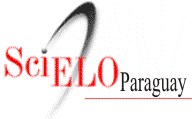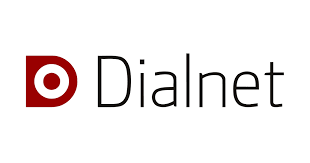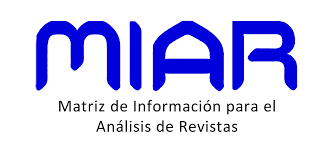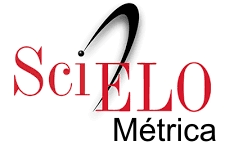Diagnóstico molecular: perspectivas sociales durante la pandemia de COVID-19
DOI:
https://doi.org/10.18004/mem.iics/1812-9528/2024.e22112400Abstract
Throughout our lives, most individuals have undergone urinalysis or blood tests, and in the era of social media, test results are now readily accessible via mobile applications or electronic mail. Although clinical laboratory signage is ubiquitous, public comprehension of molecular diagnostic techniques remained limited until the COVID-19 pandemic.
At the beginning of the pandemic, public discourse frequently centered on the insufficient diagnostic testing capacity. Polymerase chain reaction (PCR), a term primarily used within research circles, became a commonplace term. However, the general population rarely understood the complex logistical requirements of molecular diagnostic techniques, including the availability of secure biological sample handling cabinets, separating lab areas for the main sample handling processes, the acquisition of specialized diagnostic equipment, protocol standardization, and optimization, among other things. There is also a need to acknowledge that as the pandemic continued, the public's understanding was further shaped by discussions surrounding the accuracy and reliability of various tests. Reports of false negatives and positives in rapid tests highlighted the importance of understanding the limitations of different diagnostic methods(1).
This scenario led to increased scrutiny and demand for transparency regarding test performance, fostering a more informed public that began to appreciate the nuances of diagnostic testing (including logistical requirements(2).
As the pandemic progressed, daily testing capabilities increased incrementally. Institutions offering molecular diagnostic services proliferated. A July 2021 publication from the Ministry of Public Health documented 40 institutions involved in SARS-CoV-2 molecular detection, comprising 13 public laboratories, 2 Ministry of Health-affiliated centers, 1 research institute affiliated with the National University of Asunción, 1 military hospital, and 23 private laboratories(3,4). To date, there are 56 institutions, both public and private.
While public understanding of the precise diagnostic methodology remained variable, PCR testing transitioned from a specialized technique to a routine diagnostic procedure, approaching the accessibility of standard clinical analyses.
From an educational perspective, the pandemic highlighted the critical need for public scientific communication. Comprehensive educational initiatives explaining molecular diagnostic techniques, laboratory infrastructure requirements, and personnel training could have mitigated the public anxiety surrounding diagnostic availability.
Prior to the pandemic, PCR was already utilized in diagnostic protocols, such as dengue virus detection. However, the technique was not widely recognized by the general population. As a molecular biology educator, the pandemic has facilitated more engaging scientific discussion. Students now frequently reference their personal COVID-19 test experiences, enabling more nuanced explanations of technical concepts such as target genes, reaction controls, and cycle threshold (Ct) values(5).
The pandemic inadvertently introduced molecular biology terminology into everyday discourse, potentially enhancing public scientific literacy and facilitating informed discussions about health research and technology funding.
A notable ancillary observation is the increased public awareness of personal protective measures, particularly mask usage in crowded public spaces, even among asymptomatic individuals.
Reflecting on the scientific and societal implications of the pandemic remains crucial as five years have passed since SARS-CoV-2 was first identified in Wuhan, China.
Downloads
References
1. Afzal A. Molecular diagnostic technologies for COVID-19: Limitations and challenges. J Adv Res. 2020 Nov;26:149-159. doi: 10.1016/j.jare.2020.08.002.
2. Silva S, Silva C, Guarines K. Clinical and laboratory diagnosis of SARS-CoV-2, the virus causing COVID-19. ACS Infect Dis. 2020; 6(9): 2319-2336.
3. Ministerio de Salud Pública y Bienestar Social. ¿Qué laboratorios diagnostican COVID-19 por RT-PCR?. 2021. Available at https://www.mspbs.gov.py/portal/23523/iquestque-laboratorios-diagnostican-covid-19-por-rt-pcr.html Accessed December 23, 2024.
4. del-Puerto F, Rojas LE, Díaz Acosta CC, Franco LX, Cardozo F, Galeano ME, Valenzuela A, Rojas A, Martínez M, Ayala-Lugo A, Mendoza L, Ovando FS, Martínez MF, Chung HJ, Webby R, Nara E, Caniza MA. The Experience of Testing for Coronavirus Disease (COVID-19) at a Single Diagnostic Center in Paraguay before the Introduction of Vaccination. Viruses. 2023 May 10;15(5):1136. doi: 10.3390/v15051136.
5. Oviedo I. De test de coronavirus y otras dudas sobre el diagnóstico. Ultima Hora. 9 March 2021 Available at https://www.ultimahora.com/de-test-coronavirus-y-otras-dudas-el-diagnostico-n2930753 Accessed December 20, 2024















